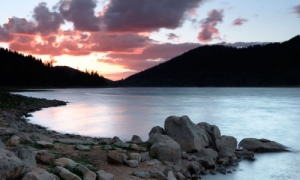 Navajo Lake Fishing Near St. George Utah
Navajo Lake Fishing Near St. George Utah
If you are an angler and you are looking for a fishing spot where there is a catchable size of rainbow trout, head over to the Navajo Lake, right in the city of St. George, in Utah. According to the fishing report, the site has been rated fair by anglers who have tried there and the lake has been stocked with so many rainbow trout, making it a great area for sport fishing. If you are heading to this area for sport fishing, you better read the article below.
Details of the Navajo Lake
The Navajo Lake is situated in the Kane County, which is in the eastern section of the Cedar City. It is about 24 miles towards the east of Cedar City, passing through the SR-14 highway. It has a size of 618 acres and with an elevation of 9,250 feet. You will likely be able to catch Rainbow trout, Brook Trout and Splake in the Navajo Lake. There are rules and regulations that must be followed when fishing at the Navajo Lake so it is better to refer to the Fishing Guidebook for this.
Describing the Site
The beautiful lake of Navajo lies on a location that has a stimulating geologic formation. The area is nourished by snowmelt while the ground water is fed by the nearby springs. The site covers an area of 600 acres if it is filled and has an elevation of more than 9,000 feet. It drains right to the Sevier River drainage as well as the Virgin River drainage.
Dike Was Constructed
In order to uphold a more dependable level of water, a dike has been constructed in order to segregate the various portions of the lake from the main lava tube drains right located in the east. During the years when good water is experienced, the lake’s area will almost double in size during the spring and the dike will increase to five feet more right under water. The lake’s maximum depth when it is on the dike’s level is more or less 15 feet.
The Lake’s Shallow Nature
The lake’s shallow nature makes it a huge challenge to manage the sport fishery for this lake. It has a huge littoral area that produces a huge quantity of flora with a lengthy period of time when ice covers it at such an elevation. The winter conditions are usually marginal for the trout and during the long period of winter, the vegetation decomposes right underneath the ice and will use up oxygen to produce toxic gases.
Before, trout survival is usually poor during the winter. The spring stocked rainbow trout grows to more than 14 inches during the fall. On years of good water, it could reach up to 18 inches on the next summer. That is, when they will be able to endure the winter. The fingerling brook trout are often stocked later during summer and will better be able to survive the winter as compared to the rainbow trout.



